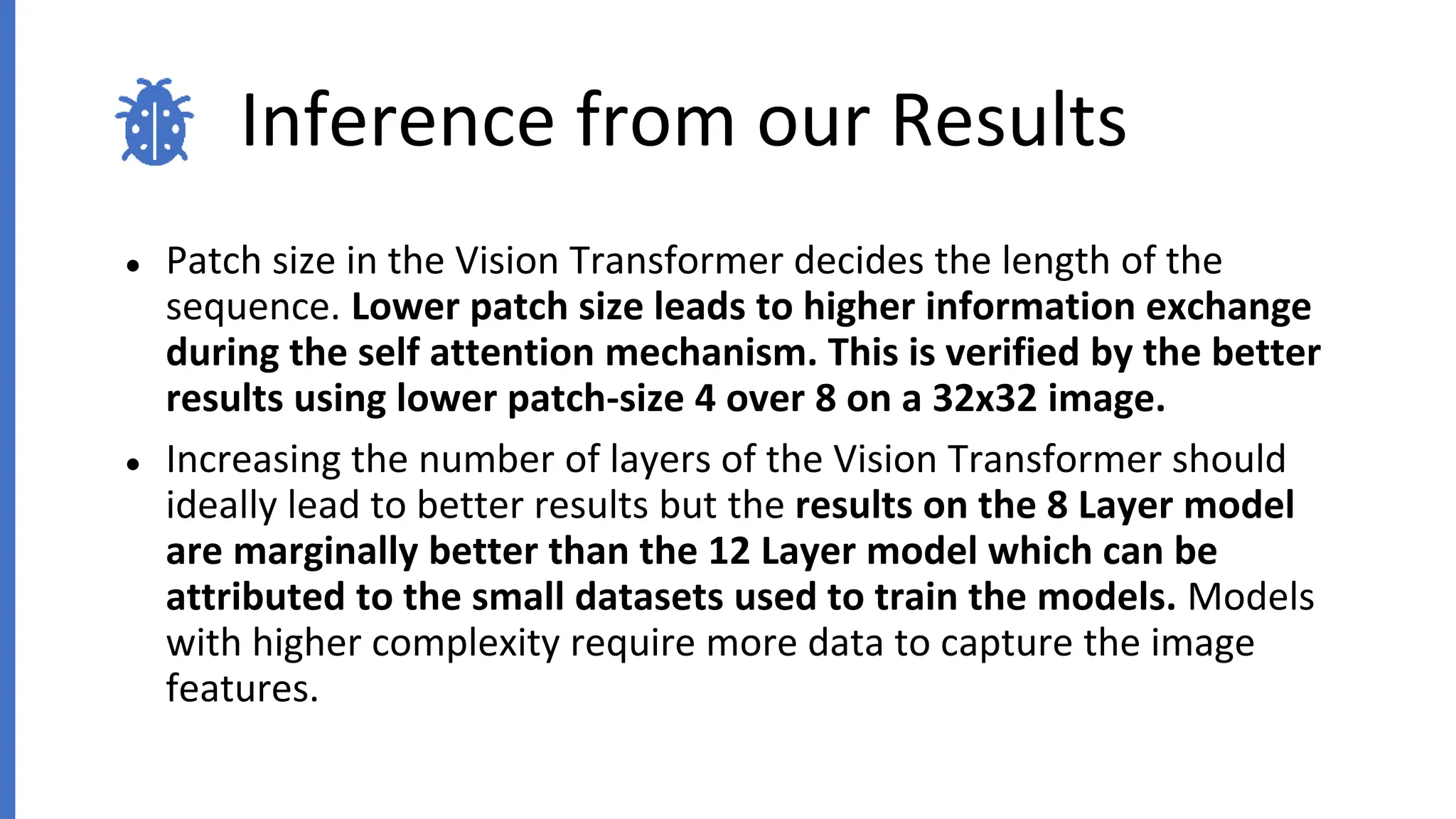The document describes a paper that explores using transformer architectures for computer vision tasks like image recognition. The authors tested various vision transformer (ViT) models on datasets like ImageNet and CIFAR-10/100. Their ViT models divided images into patches, embedded them, and fed them into a transformer encoder. Larger ViT models performed better with more training data. Hybrid models that used ResNet features before the transformer worked better on smaller datasets. The authors' results showed ViT models can match or beat CNNs like ResNet for image recognition, especially with more data.

















![Vision Transformer Pseudo-Code
def ViT (input):
patches = Create_Patches(input)
patch_embed = Patch_Embedding(patches)
sequence = Concat(class_token, patch_embed) + Position_embedding
hidden_states = Transformer(sequence)
class_output = Classification_Head(hidden_states[0])
return class_output
This is the pseudo code for the sequence of operations on a image to
classify it using the Vision Transformer Model](https://image.slidesharecdn.com/presentation-240314052142-cb07f238/75/Presentation-vision-transformersppt-pptx-18-2048.jpg)
![Hybrid Vision Transformer Pseudo-Code
def Hybrid-ViT (input):
resnet_features = ResNet_Feature_Extractor(input)
patches = Create_Patches(resnet_features)
patch_embed = Patch_Embedding(patches)
sequence = Concat(class_token, patch_embed) + Position_embedding
hidden_states = Transformer(sequence)
class_output = Classification_Head(hidden_states[0])
return class_output
The difference between the Hybrid and Normal Vision Transformer is
that the input features are extracted from pretrained ResNet34 till the
first Residual Layer instead of being directly fed to the Transformer](https://image.slidesharecdn.com/presentation-240314052142-cb07f238/75/Presentation-vision-transformersppt-pptx-19-2048.jpg)
















